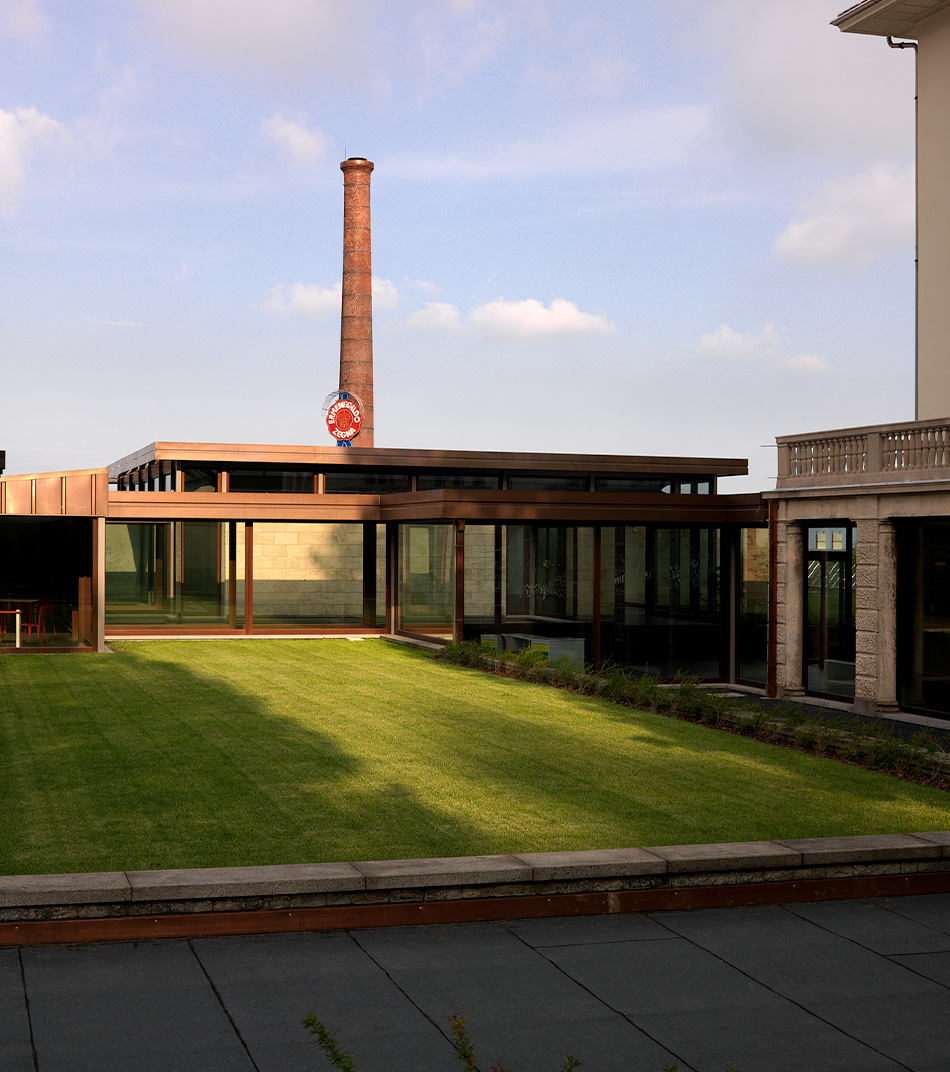Let’s have a look at the Zegna house organ TOP, which documents nearly 15 years of the company’s history and its transition from fabrics only to clothing and accessories as well, between December 1966 and 1980. The world was changing in those years, from protest politics to Reaganesque hedonism, via economic austerity and the “years of lead”. People changed their way of being and therefore of dressing. Or vice versa. TOP invited them to look at their evolving world in relation to the quality of production and style in Italy and its burgeoning reputation.
TOP styled itself a “Lanificio Ermenegildo Zegna & Figli publication”, based in Trivero. Its first art director was the brilliant graphic artist Franco Grignani, a formidable all-rounder. Its cover – stark but highly elegant, even daring in its simplicity – was undoubtedly his. The photographs were by Roberto Zabban, a pioneering master of industrial and advertising photography. And the highly refined printing was by Alfieri & Lacroix in Milan, a specialist in luxury editions and close to Grignani. And that’s it: two creative talents and an excellent printer. The first image: St. Stephen’s Cathedral in Vienna, where the world’s top tailors had gathered.
Over the years, the images gradually counted for more than the texts, but TOP never abandoned its role as a magazine with well written editorials and concise yet detailed and sometimes provocative articles. There was always some comment on the subjects of the photographs and illustrations. For TOP was capable, like Zegna itself, of occupying the ground between industrial garment making and tailoring. It could call on photographers like Alfa Castaldi, Carlo Orsi, Oliviero Toscani and Luis Suñé, but did not disdain, at least in the first few years, drawings, sketches and paper patterns.
After Grignani, the magazine was headed, in turn, by Luigi Guastamacchia, Pietro Tarallo, Livio Berruti and Giuliano Angeli: TOP changed a lot but remained itself. Corporate news, small yet significant steps towards international distribution of the brand, its presence in the most prestigious boutiques, annual awards for sheep farmers, interesting photo shoot locations, from the Biella area to New York, from Japan to Australia, but never abandoning the character perceptible right from the front cover, on which a jacket and tie nearly always managed to say it all.
The third issue of TOP (1968) was already propounding the “total look” formula, having launched its “coordinated creativity” the year before. Zegna offered its readers a narrative in which the production chain was already certified, the story of a fabric in real time and not limited to a particular category (merinos of course, but also mohair, cashmere, linen, silk…), development along parallel lines (underwear and technical garments for sport, but also casual sailor) and stylistic integration based on combinations between its own brands (STIMA, Gritti and Cantara) and other big names in the industry, such as Borsalino, Calzaturificio di Varese, Ferragamo, etc.
And Agnona. For the “other half of the sky”, as it were. Women were in the pages of TOP from the beginning: already on the front cover in the second issue and in the texts from the third onwards. Besides, TOP was never a “men only magazine” but a sort of compass to guide the aesthetic choices of people seeking beautiful and well made clothes representing a style of living. So women could hardly be mere details or ornaments. Anna Piaggi, in 1968, was the first and only woman editor, but after her there were always women in the team (Cristina Brigidini, Anna Riva, Franca Ruol, Marina Luraghi, Loredana Colombo…). “TOP women” will be our theme next week.
In the second issue (1967), TOP published its manifesto, with an editorial entitled “Una ventata di gioventù” (a blast of youth), for a house organ dedicated to the young in spirit, irrespective of actual age. For the next 13 years the magazine stayed true to that project, which addressed “the problem of male elegance as never before, as a subject to be discussed in relation to other issues but on its own terms and at an extremely high level” and invited its readers to “feel “young” in the best and most useful way, by living well in our world and living well in our time”.


